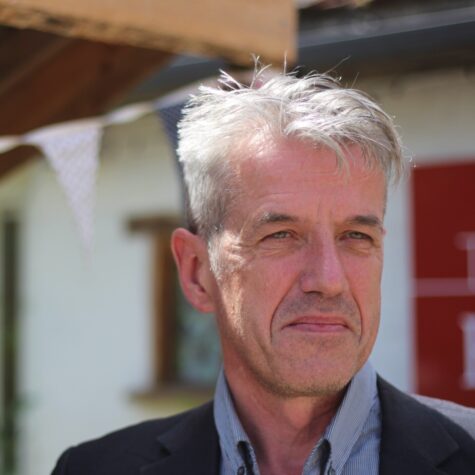Five lessons about anchor networks

In this new ‘From ambition to action’ blog series, key South London stakeholders respond to the South London BIG Ambition Growth Statement.
The concept of anchor institutions – organisations rooted in a place that can play a defining role in creating and reinforcing local economic ties – has been present in the UK for over 10 years. Anchor networks, which bring these organisations together in their locality, have become particularly prominent in recent years, with a spike in those set up during and after the pandemic.
Alongside this, we have seen the rise of anchor network coordinators – people given the important role of managing networks and moving them forward. At CLES, we have long been interested in the development of these roles, but never before have anchor co-ordinators been brought together in person from around the country to share their insights. Until now. CLES and the London Anchor Institution Network came together to do just that.
On 30 July 2025, seven different networks came together in London for a workshop (it would have been 11 but for problems with the trains that day) to test the value of a network of networks, to share practice and to work together to demonstrate the value of the anchor network approach.
From the conversations that day, here are five observations about anchor networks – and how to coordinate them successfully – which you might find useful.
One size doesn’t fit all
The first thing that struck us was the variation in the shape, size and composition of the anchor networks represented. There are region-wide networks with over 200 members; networks in cities with fewer than ten member organisations focussing primarily on the public sector; formal networks that contribute money towards a coordinator or sign an annual agreement; and informal networks that come together on an issue-by-issue basis. Some networks operate within city boroughs; some have had more success with environmental projects; others with procurement.
Co-ordinators saw this variety as a real strength of the model, as it means different areas have been able to develop their networks to match their differing needs and opportunities.
They’re people-powered
Another strength of the network approach that came out in the discussion is that it can magnify the impact and influence of motivated and experienced individuals. For example, a procurement representative from one institution who has already had success working with local businesses can pass on that know-how and their contacts to other procurement representatives from the network.
To unlock the potential of these individuals, the group agreed on the need for vertical buy-in – finding not only the right operational staff but also the right senior manager to ensure there is institutional backing for the work, so that it does not get marginalised or grind to a halt when other priorities inevitably arise. This is also important because trying to change systems, processes and policies in large institutions can take time and involve multiple actors.
The other success factor we identified (unsurprisingly) is having an anchor network co-ordinator! This is someone who can keep the work moving forward regardless of the changes that happen within individual institutions.
A little less conversation, a little more action, please
All the coordinators identified the shared challenge of turning sign-up and agreement into action. Anchor institutions are often quick to agree to join a network and sign up to pledges, but issues can arise when trying to translate those pledges into tangible change.
As a group, we discussed the variety of reasons for this – perhaps the biggest being that staff often lack time to pursue anchor network goals when faced with already busy workloads. One way to counter this, raised in our conversation, is to link anchor network activity to the existing individual organisational strategies of the institutions involved.
For example, some universities have civic university agreements committing them to do more for the local economy. Similarly, some health trusts have recognised that helping to reduce economic inequality also supports their corporate priority of reducing health inequality. In both cases, participating in an anchor network provides an easier route to achieve their already existing organisational commitments.
Anchored to the immediate, with an eye on the future
Another way to generate action, agreed on by the coordinators, was to identify specific opportunities for targeted projects that lead to quick wins, rather than trying to progress a wide-ranging strategy. For example, this could look like working on a specific category of spend to find local procurement opportunities, rather than attempting to address all categories.
This focus on specific action, rather than broad strategy, also helps institutions identify shared priorities and opportunities to work together, further highlighting the value of the network approach. A good example was given of a housing association that has helped a small group of recently unemployed residents find jobs with a local hospital trust that was struggling to recruit.
Ultimately, anchor networks are a long-term commitment that requires patience. These quick wins can help maintain motivation while also illuminating the way forward.
Talking to Paul Kirkbright, he highlighted, “the lessons learned from anchor networks directly align with fostering collaboration and driving local economic growth.” He emphasised that the creation of diverse, people-powered networks is key to achieving inclusive, place-based economic development. By leveraging the strengths of anchor institutions, South London can unlock opportunities for sustainable, community-driven growth, reinforcing the ambitions for a more connected and resilient economy that benefits everyone.
Storytelling and celebration are key
Finally, the group discussed the use of both quantitative and qualitative data. Establishing a baseline for a network, for example, in terms of local spend and employment data, can help demonstrate the size of the prize as motivation for the network, while also identifying specific opportunities for immediate action.
The group also agreed on the value of creating case studies on a human scale. For example, telling the story of an individual who has benefited from a new job, or a social enterprise that has just won a new contract, to give network partners a tangible sense of the difference their work is making.
Similarly, celebration is important. When an anchor organisation completes a great project, they should be celebrated for their success. Attendees told us about events they have run to spotlight the work of anchor organisations, which have helped keep the anchors engaged.
So, the question arising from our gathering was this: Is there value in a network of networks? In coordinators sharing practice? And in a network approach for anchor institutions?
We hope you’ll agree that the answer to all three is an emphatic yes. Our gathering was a fantastic opportunity to see different anchor networks in a room together, sharing their challenges, successes and opportunities. We see this as the start of an ongoing relationship, where anchor networks can work together to share learning and resources that unlock the value of the network approach.
Get in touch with Conrad if you’d like to get involved or if you would like to share how you’ve responded to some of the challenges and opportunities we’ve highlighted here: [email protected]
Read the South London BIG Ambition growth strategy
Conrad Parke Bio
Conrad has a strong track record of working with anchor institutions in Birmingham and has demonstrated an exceptional commitment to trying to shape a just society in the region. As well as his role as Birmingham Anchor Network Co-ordinator at CLES, Conrad supports two neighbourhoods that have received Big Local funding in Birmingham and Solihull. He would like to thank former CLES colleague Lauren Bond for her support in compiling this blog.



